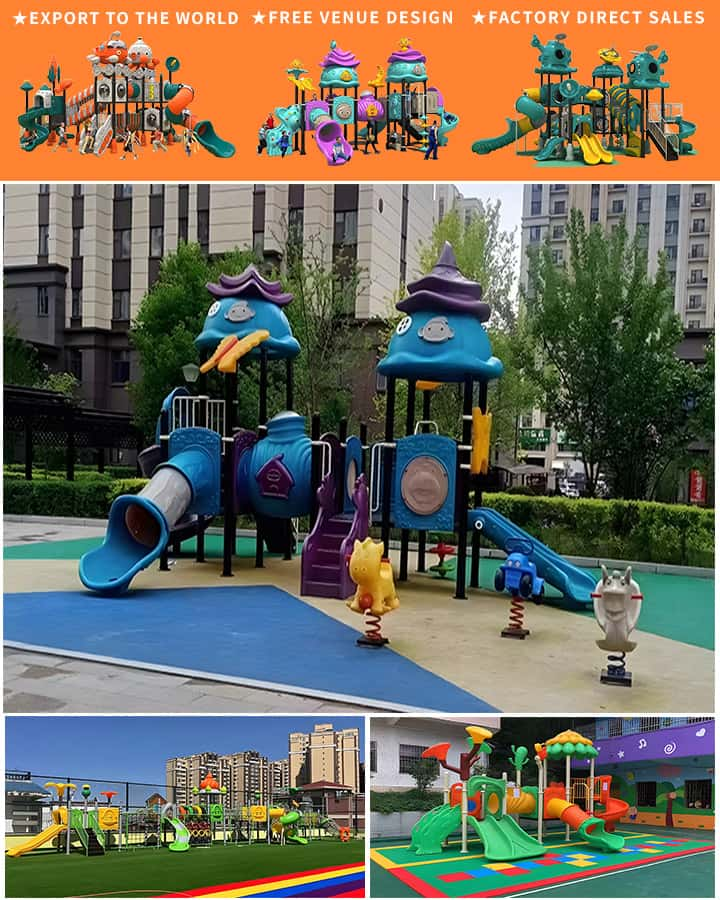When designing an outdoor playground, choosing the right flooring is crucial. It ensures safety for children while providing a durable and aesthetically pleasing surface. This guide explores various outdoor playground flooring options, highlighting their benefits, drawbacks, and suitability for different needs.
1. Rubber Mats and Tiles
Rubber mats and tiles are among the most popular choices for playground surfaces due to their excellent impact absorption properties. Made from recycled rubber, they offer a soft landing that reduces injuries from falls. These surfaces are also slip-resistant and durable, making them suitable for high-traffic areas. However, rubber tiles can become hot under direct sunlight and might require periodic maintenance to remove dirt and debris.
2. Poured Rubber
Poured rubber is another excellent option that provides a seamless surface, eliminating tripping hazards. It’s installed by pouring liquid rubber onto a prepared base, which then cures into a smooth, resilient floor. This type of flooring is particularly beneficial in areas with heavy use, such as around climbing structures or slides. Although poured rubber offers superior durability and safety, it can be more expensive than other options and might require professional installation.
3. Mulch
Natural wood mulch is often used in playgrounds because it provides a soft landing surface and has a natural appearance. It’s cost-effective, easy to install, and environmentally friendly. However, mulch requires regular maintenance to prevent the growth of mold and mildew, and it can shift over time, creating potential tripping hazards. Additionally, it may not be suitable for wheelchair accessibility.

4. Artificial Turf
Artificial turf is increasingly popular due to its low maintenance requirements and ability to provide a consistent, green appearance year-round. It offers decent shock absorption and can withstand heavy use, making it ideal for active play areas. However, artificial turf may become hot in direct sunlight and can be more costly initially compared to other materials. It also requires proper drainage to avoid water accumulation.
5. Concrete with a Soft Surface Coating
For areas requiring maximum durability, such as basketball courts or paths, concrete with a soft surface coating is an excellent choice. The concrete base ensures stability and longevity, while the soft coating provides cushioning for falls. This option is less common in traditional playgrounds but is ideal for multipurpose recreational areas. It’s important to ensure the coating is non-toxic and slip-resistant for child safety.
6. Grass
Natural grass remains a classic choice for playgrounds, offering a soft and safe surface. Grass is visually appealing and provides a cool surface in hot weather. However, it requires regular mowing and maintenance to stay even and free of holes. Grass can also become muddy and slippery when wet, posing a safety risk.
Factors to Consider
When selecting outdoor playground flooring, consider the following factors:
- Safety: Ensure the surface provides adequate cushioning to minimize injuries from falls.
- Durability: Choose a material that can withstand heavy use and harsh weather conditions.
- Maintenance: Evaluate the level of upkeep required and whether it fits within your budget and resources.
- Accessibility: Ensure the surface is accessible for all children, including those with disabilities.
- Aesthetics: Select a flooring option that complements the overall design of the playground.
Conclusion
Selecting the right outdoor playground flooring involves balancing safety, durability, and aesthetic appeal. Whether you opt for rubber mats, mulch, or artificial turf, each material has its unique advantages and challenges. By considering the specific needs of your playground and the preferences of its users, you can create a safe and enjoyable environment where children can play and learn.




